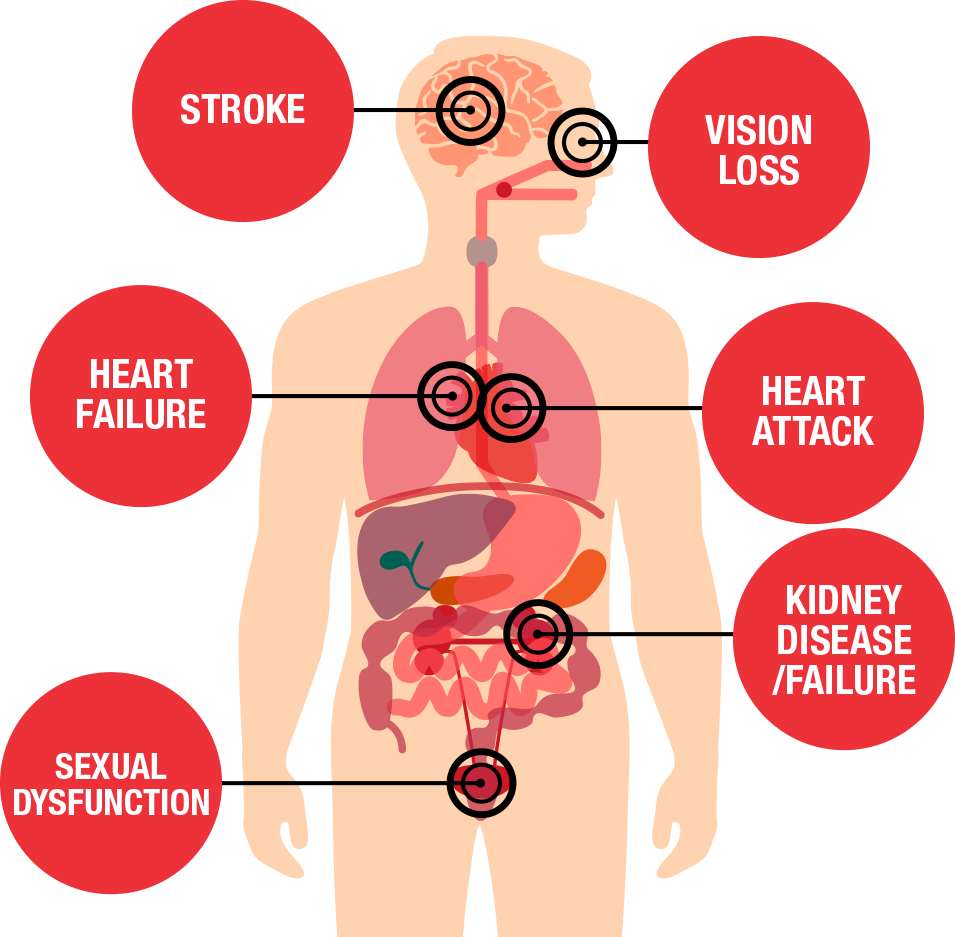What is High Blood Pressure?
Quick Facts
- High blood pressure can lead to serious health problems.
- It’s important to have your blood pressure measured and to understand what your numbers mean.

High blood pressure is also known as hypertension. It happens when the force of your blood pushing against the walls of your blood vessels is too high. High blood pressure can lead to other serious problems such as heart attack and stroke.
Watch video: Is there a difference between hypertension and high blood pressure?
Know your numbers.
Nearly half of U.S. adults have high blood pressure. Many don’t even know they have it. The only way to know you have high blood pressure is to have your blood pressure checked. A diagnosis of high blood pressure will need to be made by a health care professional.
Learn about your blood pressure numbers and what they mean.
| BLOOD PRESSURE CATEGORY | SYSTOLIC mm Hg (upper number) | and/or | DIASTOLIC mm Hg (lower number) |
|---|---|---|---|
| NORMAL | LESS THAN 120 | and | LESS THAN 80 |
| ELEVATED | 120 – 129 | and | LESS THAN 80 |
| HIGH BLOOD PRESSURE (HYPERTENSION) STAGE 1 | 130 – 139 | or | 80 – 89 |
| HIGH BLOOD PRESSURE (HYPERTENSION) STAGE 2 | 140 OR HIGHER | or | 90 OR HIGHER |
| HYPERTENSIVE CRISIS (consult your doctor immediately) | HIGHER THAN 180 | and/or | HIGHER THAN 120 |
Take Control of Your Blood Pressure
Is your blood pressure in a healthy range? The best way to know is to get it checked.
Then, enter your numbers into this calculator to see which blood pressure category the reading is in.


Blood pressure and the circulatory system
Your tissues and organs need the blood your circulatory system carries through the body. Your heartbeat makes this happen by pushing blood through the blood vessels. These vessels include arteries, veins and capillaries.
Blood pressure is the result of two forces. The first force (systolic pressure) happens as blood pumps out of the heart and into the arteries. The second force (diastolic pressure) is created as the heart rests between heart beats. These two forces are each represented by numbers in a blood pressure reading.
The damage starts in your arteries and heart.
See how high blood pressure can damage your arteries and heart.
When blood pressure is high for too long, it can damage the walls of blood vessels, causing them to develop tiny tears. To fix these damaged areas, the body sends special cells that stick to the site. Over time, substances such as cholesterol and fats may also build up at these damaged spots, forming plaque.
As plaque slowly builds, a process called atherosclerosis, it can make the inside of the arteries narrower. This narrowing can block the flow of blood, further increasing blood pressure.
- See how atherosclerosis takes place.
- See how your heart can become enlarged.
- See an infographic of the consequences of high blood pressure. (PDF)

High blood pressure is a 'silent killer.'
- Most of the time there are no obvious symptoms.
- Certain physical traits and lifestyle choices can raise your risk of high blood pressure.
- Untreated high blood pressure can cause heart attack, stroke and other health threats.
Preventing and managing high blood pressure
- It’s best to avoid high blood pressure altogether. Healthy lifestyle choices such as not smoking, eating a healthy diet and being physically active can help.
- If you have high blood pressure, work with your health care professional to control it. This may mean taking medications in addition to making healthy lifestyle changes.
Controlling your blood pressure will help you live a longer, healthier life.
Get the high blood pressure fact sheet: English (PDF) | Spanish (PDF)








